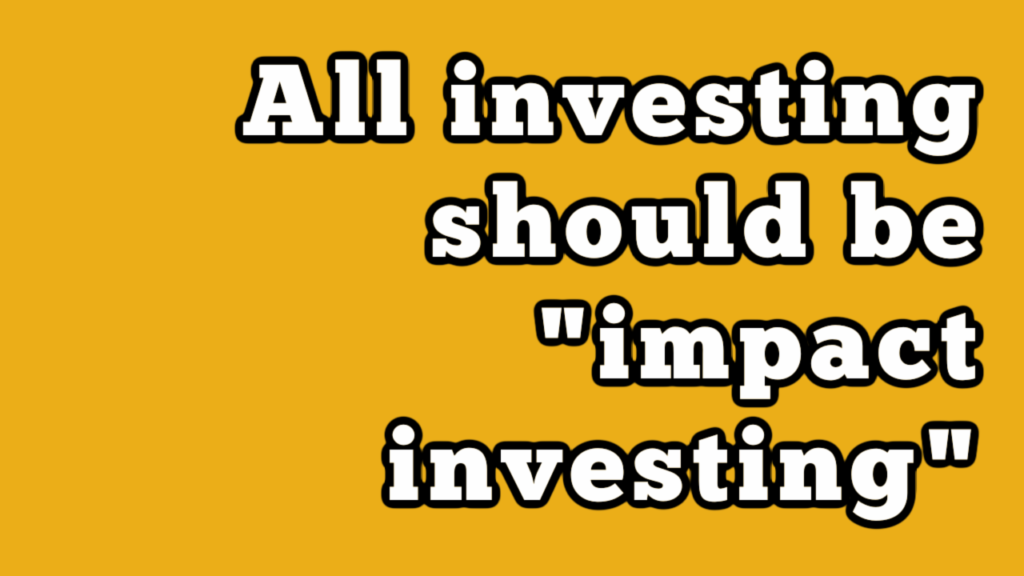All investing should be “impact investing”

– Sustainable investing continues to rise.
– Investors are now turning their attention to the level of impact a sustainable investment has.
There’s been a lot of understandable hand-ringing about greenwashing when it comes to assets under management as a lot of funds have been labeled as “ESG” or “sustainable” to take advantage of current market conditions. As Julian Kolbel writes in this note, this study on sustainable investments shows that assets under management are still growing strongly – but that attention is shifting from the pure volume of sustainable investing to the impact of it.
That’s all well and good. But what really caught my eye was this quote by Julian:
I would like to advocate for thinking of impact not as a category of certain investments, but a property that all types of investments can potentially generate. The challenge is to maximise and demonstrate that impact across different asset classes.
What is “impact investing”? Here’s a note from Jamie Broderick about this NY Times article entitled “An Argument for Investing Where the Return is Social Change” that helps explain:
Debate has persisted for years as to whether impact investing implies that you make concessions on the risk or return achieved. The fact is that impact investing covers a range of options. Investors who need or want a market risk/return from their impact investments can get it. This is “finance-first” impact investing, and it taps into the massive pool of capital seeking market returns.
“Impact-first” investing puts the priority on the impact created, and may make concessions on the return achieved or the risk taken. This is a smaller pool of capital, typically foundations, development funders and high net worth investors, including through family offices.
Which approach is “better” or creates more impact? Think of it as (high volume x medium impact) vs. (low volume x high impact). There should be room for both, and even better if they are complementary.
